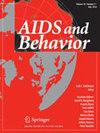Rapid Start of HIV Antiretroviral Therapy in New York State
Abstract
Rapid start of antiretroviral therapy (ART) after an HIV diagnosis is a novel approach with demonstrated benefits for HIV care. However, utilization of this approach remains poor in the United States. Using retrospective reviews of HIV clinical care data from the New York State Department of Health AIDS Institute’s Quality of Care Program, we examined changes in rapid start of ART from 2019 to 2022 to assess the degree to which the rapid start model is being realized in the state. We also identified patient-level factors associated with delayed initiation and examined associations between time to treatment initiation and viral load suppression. We found that rapid initiation increased steadily across the years examined but differed depending on where patients received care and whether they were initially diagnosed by the data-reporting organization or by an external medical organization or testing center. We also found that rapid start varied across several patient-level factors, which also depended on whether patients were initially diagnosed by the data-reporting organization or by an external medical organization or testing center. Finally, 67.8% of patients who initiated ART on the same day of HIV diagnosis and 69.7% of patients who started ART within seven days of diagnosis were virally suppressed within 91 days of diagnosis, compared to 42.9% of patients who initiated ART between 31 and 91 days. Increased utilization of the rapid start model over time and strong associations between rapid start and timely viral suppression suggest that further uptake of this strategy would likely advance progress towards Ending the Epidemic and health equity goals.

 求助内容:
求助内容: 应助结果提醒方式:
应助结果提醒方式:


